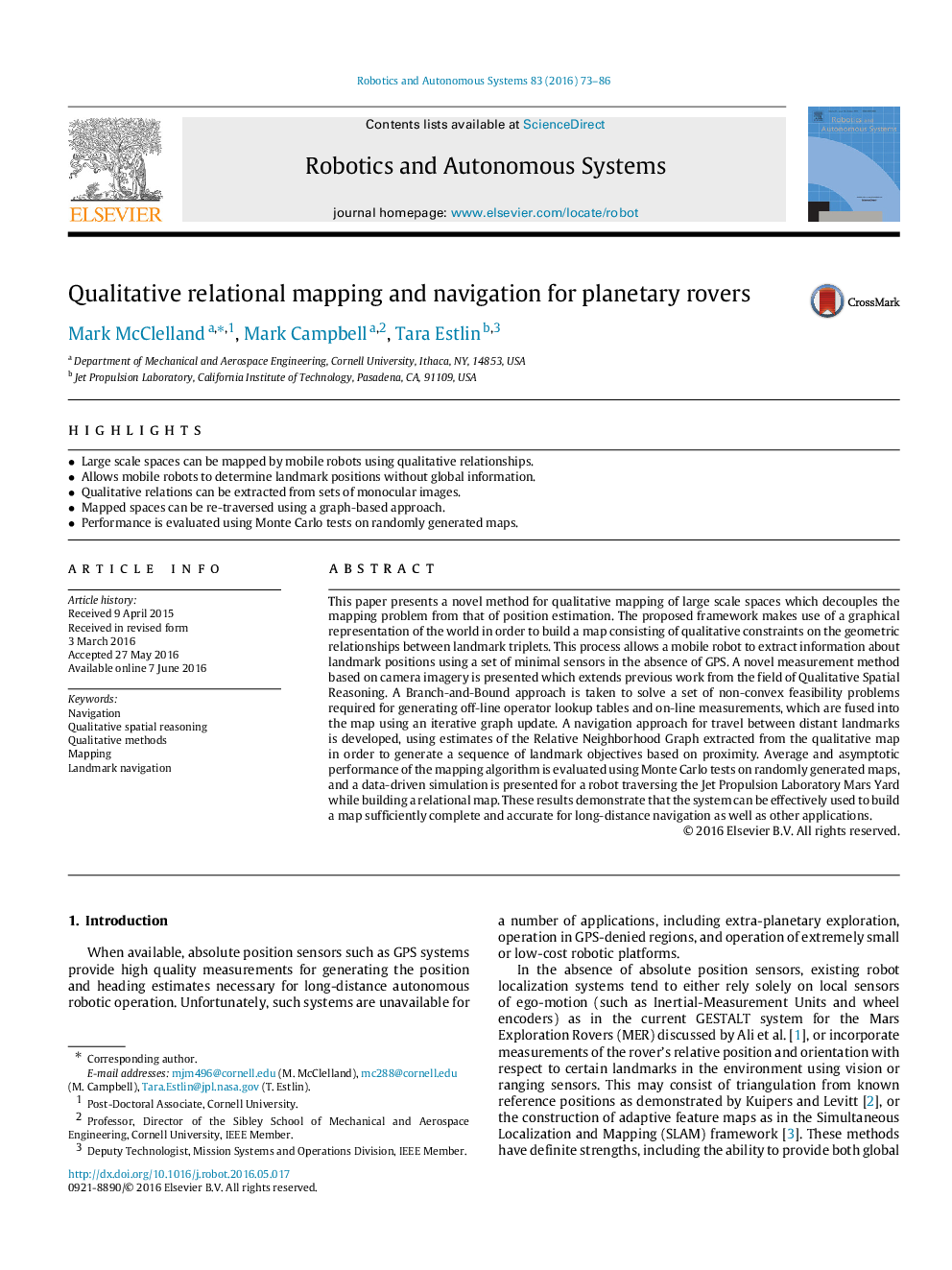| Article ID | Journal | Published Year | Pages | File Type |
|---|---|---|---|---|
| 411904 | Robotics and Autonomous Systems | 2016 | 14 Pages |
•Large scale spaces can be mapped by mobile robots using qualitative relationships.•Allows mobile robots to determine landmark positions without global information.•Qualitative relations can be extracted from sets of monocular images.•Mapped spaces can be re-traversed using a graph-based approach.•Performance is evaluated using Monte Carlo tests on randomly generated maps.
This paper presents a novel method for qualitative mapping of large scale spaces which decouples the mapping problem from that of position estimation. The proposed framework makes use of a graphical representation of the world in order to build a map consisting of qualitative constraints on the geometric relationships between landmark triplets. This process allows a mobile robot to extract information about landmark positions using a set of minimal sensors in the absence of GPS. A novel measurement method based on camera imagery is presented which extends previous work from the field of Qualitative Spatial Reasoning. A Branch-and-Bound approach is taken to solve a set of non-convex feasibility problems required for generating off-line operator lookup tables and on-line measurements, which are fused into the map using an iterative graph update. A navigation approach for travel between distant landmarks is developed, using estimates of the Relative Neighborhood Graph extracted from the qualitative map in order to generate a sequence of landmark objectives based on proximity. Average and asymptotic performance of the mapping algorithm is evaluated using Monte Carlo tests on randomly generated maps, and a data-driven simulation is presented for a robot traversing the Jet Propulsion Laboratory Mars Yard while building a relational map. These results demonstrate that the system can be effectively used to build a map sufficiently complete and accurate for long-distance navigation as well as other applications.
